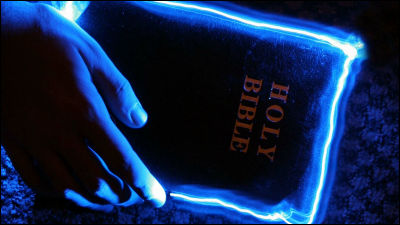What is the real background and reason why video aspect ratios such as 16:9 and 4:3 were decided?

For many people, the screen aspect ratio (aspect ratio) of TV and PC displays is generally 4:3 or 16:9 , but in the world of movies, it is wider than 2.35:1 (12:5). There are sizes such as ``CinemaScope ,'' and we don't know the real reason why those ratios were created in the first place. A movie that answers many such mysteries is ' The Changing Shape of Cinema: The History of Aspect Ratio '.
The person who first decided on the aspect ratio of images was William Kennedy Dixon, who worked for Thomas Edison, who invented motion picture film. In the 1890s, the Eastman Kodak Company began mass-producing film, and Edison began using this film in the Kinetoscope , a device he had invented that later became the basis of movie projectors.
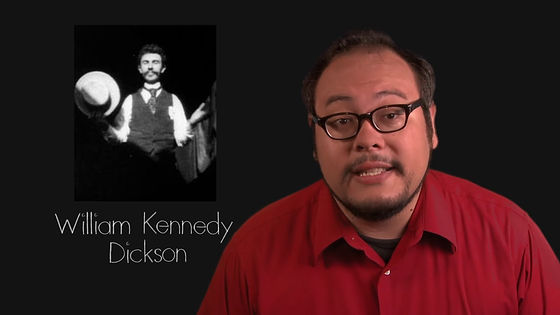
When using 35mm wide film, Mr. Dixon decided to place one frame for every four

As a result, the size of the image recorded on the film was 0.95 inches x 0.735 inches (approximately 24.13 mm x 18.67 mm), which became the origin of the aspect ratio ' 4:3 ' or ' 1.33 '. It is not clear why Mr. Dixon decided on this ratio, but since then this size has become established as a standard size.

In 1909,

The next change occurred in 1929 with the introduction of sound films called 'talkies.' Because an optical recording line was installed inside the 35mm-wide film to record sound using light, the width of the frame for recording video was slightly narrowed, resulting in a slight change in the aspect ratio.

Later, in 1932,

◆The advent of television and the era of wider TVs
In the 1950s, the situation surrounding movies entered a period of turbulence. With the birth of television, which can be called the ``younger brother'' of movies, the movie industry was forced to reorganize from its traditional way of working. People's attention was focused on TVs that allowed them to watch images at home, and attendance at movie theaters continued to decline. When the screen size of television was decided, the aspect ratio ``4:3'', which was the only image that existed before that in movie theaters, was naturally adopted, and the movie industry has become driven by the need to remain competitive by adopting different formats.

Then came widescreen movies, which could reproduce a higher sense of reality by widening the width of the image. The first widescreen movie was shown on September 30, 1952, marking the beginning of the widescreen war that would last for 10 years.
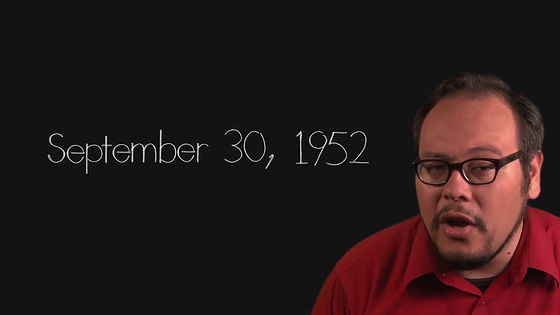
Fred Waller, who was also a film director and engineer, synchronized three connected cameras to film the video in three parts, and when showing it, he synchronized three projectors to create a large curved screen.

Cinerama involves recording images shot with three cameras with 27mm lenses onto 35mm film that is six perforations in height. By arranging three vertically shot images horizontally, we succeeded in obtaining an extremely wide image with an angle of view of 147 degrees and an aspect ratio of 2.59.

Cinerama also made it possible to create a surround sound environment by playing back a total of seven channels of audio, and this technology became widely accepted as an extremely groundbreaking technology. The film ``This is Cinerama'', which took full advantage of this system, became a big hit and became a long-running hit that was shown at the Warner Theater in New York for two years.
Although it was a very innovative system, a system that used three cameras caused various problems during the filming and screening stages. One of these is the issue of the camera's 'focal length.' Cinerama cameras only have a single focal length, so when shooting, it is necessary to put together the footage by adjusting the placement of the actors rather than the camera. It was so much so that it was done.
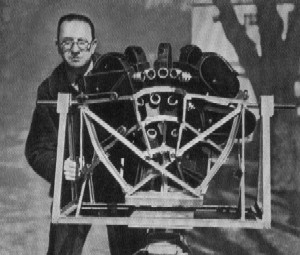
Although Cinerama faced such problems, it toured around the country as a travelogue film depicting the scenery of its travels, and succeeded in making a large profit. However, it wasn't until 10 years later, in 1962, that Cinerama was adopted into mainstream cinema, and the films that were made ended up being 'The Wonderful World of The Brothers Grimm' and 'How the West was Won.' There are only two of them.
How the west was won - YouTube
The drawback of Cinerama was that it had high shooting costs and high screening costs for movie theaters, but the popularity of widescreen movies was so great that it became a level that could not be ignored even in the industry. Eight months after Cinerama's premiere in April 1953, Paramount released Shane, the industry's first studio-produced film to be shown in a flat, uncurved widescreen.
Shane (1953) - YouTube
When producing 'Shane,' Paramount changed the screen aspect ratio to ' 1.66 ' by removing the top and bottom of the footage, which had been shot in 'Academy ratio.' However, just because the aspect ratio of the Academy Ratio movie was changed from 1.37 to 1.66, we can't expect much of a change; rather, the focus is on the new construction of Radio City Music Hall, where the movie was being screened. The screen was significantly expanded from 30 feet (about 9 meters) to 50 feet (about 15 meters). Please note that this work uses a 3-channel stereo soundtrack.
Yet another problem existed. Since the footage was originally filmed in the usual way and is forced to be changed to widescreen for screening, it is inevitable that the final result will be different from the original widescreen work. Paramount was also aware of this problem, and there was also a problem called ``film grain'' where film grain becomes noticeable when the image is enlarged.
◆20th Century Fox: 'CinemaScope' using special lenses
Seeing the success of Cinerama, 20th Century Fox executives flew to France and visited Professor Henri Cresion, who invented the anamorphoscope in the 1920s. Anamorphoscopy is a technology that uses a special lens called an anamorphic lens to compress an object in half in the width direction and record it on film.
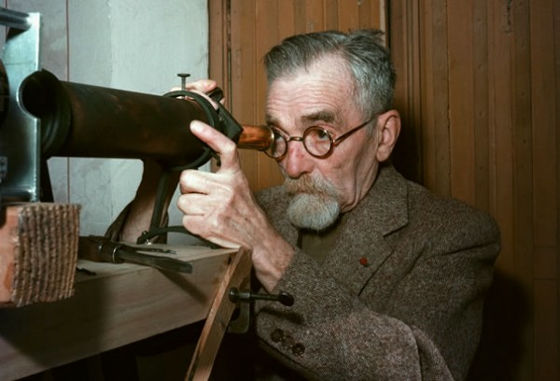
This format, which Fox named `` Cinemascope ,'' records wide video that is compressed to half the width of traditional 35 mm film, and has the same four perforations. minutes. Furthermore, the aspect ratio is `` 2.35 '' after recording several channels of audio, making it possible to produce images that can be safely called ``widescreen.'' The first movie shot in CinemaScope was a work called ' The Robe ' in 1953, which became a huge hit.

Although there were technical problems with anamorphic lenses, anamorphoscope movies are easier to shoot than Cinerama, which costs a lot of money, and the cost of screening equipment that movie theaters have to bear is lower. He gained a lot of support from the company and came to reign as a winner in the wide film industry. The only company that did not agree with this was Paramount, which had earlier started the widescreen battle.
CinemaScope received a great response, but due to the mechanism of enlarging 35mm film images, it is inevitable that the problem of film grain will occur, which is why Paramount cannot agree with the CinemaScope camp. It is said that it was. Therefore, Paramount independently developed a format called ` `VistaVision '' that changed the way the film was used from vertical to horizontal.
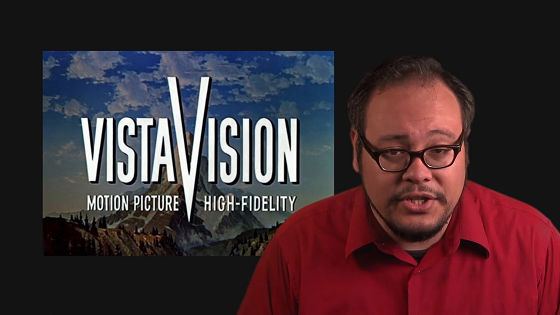
VistaVision uses regular 35mm film, but with the bold idea of using the film horizontally when shooting, we are able to achieve an area per frame that was previously impossible. The length of each frame is 8 perforations, and the aspect ratio is 1.85 . Master film images shot horizontally are rotated vertically and reduced in size when the film used for distribution to movie theaters is printed, which has the effect of reducing film grain during projection. thing.
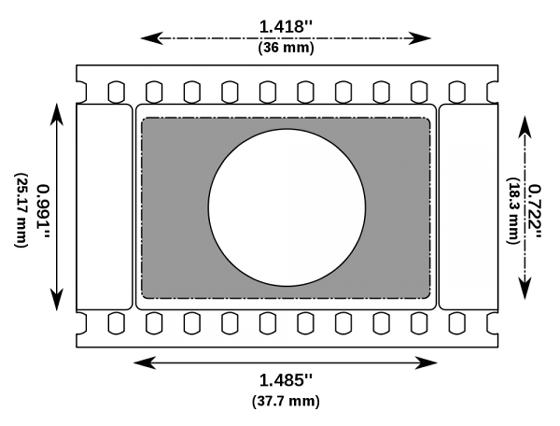
The first work shot with VistaVision was ``White Christmas'' in 1954, and it was later used in numerous movies such as ``The Ten Commandments.''
However, speaking of VistaVision's works, Alfred Hitchcock is the most representative. Director Hitchcock used VistaVision to film many of his films, including ``To Catch a Theif,'' ``Vertigo,'' and ``North by Northwest.''
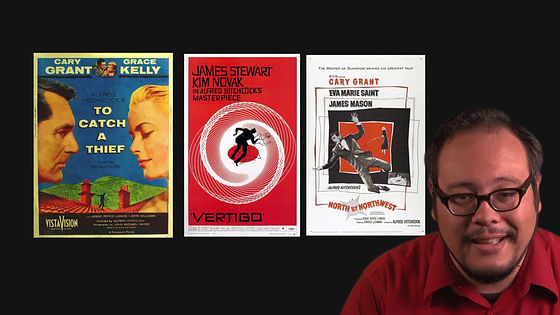
◆New formats that appear one after another and beyond the limits
In the 1950s, many other widescreen formats were created, including Superscope, Technirama, Cinemiracle, and Vistarama. However, as 35mm film reaches its physical limits, the industry moves toward even larger film sizes.
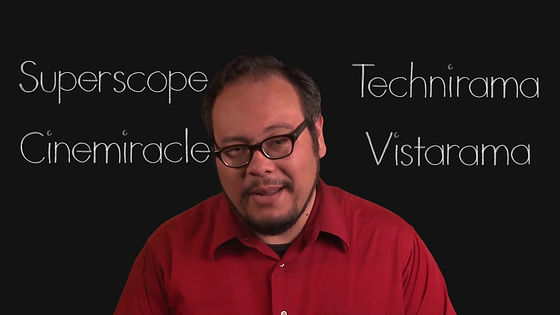
Mike Todd, a former Cinerama co-investor and Broadway producer, developed the 70mm film format `` Todd AO '' in collaboration with American Optical, Co. The aim is to 'shoot the images that Cinerama achieved with one camera and reproduce them with one projector', and the aspect ratio of this format is ' 2.20 ', compared to Cinerama's 2.59. I was there.
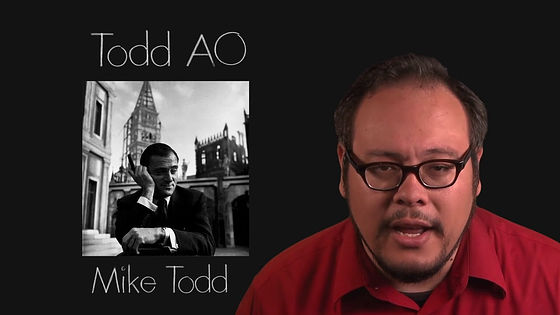
The first production filmed using the Todd AO was the 1955 musical film Oklahoma!, based on the musical of the same name. This work was shot with both Cinemascope and Todd AO, and the following movie shows a scene comparing the differences.
TODD AO vs CINEMASCOPE - YouTube
The follow-up, ``Around the World in 80 Days,'' also became a huge hit. Todd AO handles many of Rodgers and Hammerstein 's works, and is known for making films such as ``South Pacific'' and ``The Sound of Music.''
◆The advent of “Panavision”
In 1954, when the widescreen rush continued, a small company started manufacturing anamorphic lenses for cameras and projectors to compensate for the shortage of anamorphic lenses. Panavision , a company that started out specializing in cinemascopes, quickly became the industry leader after solving the technical problems faced by early cinemascopes. By the late 1950s, Panavision was threatening CinemaScope itself. Building on the great success of lens manufacturing, Panavision began developing and acquiring new camera systems and formats.
One of the new methods is called ' MGM 65. ' The technology used 70mm film, which is twice the width of 35mm film, to achieve high image quality and a wide screen.
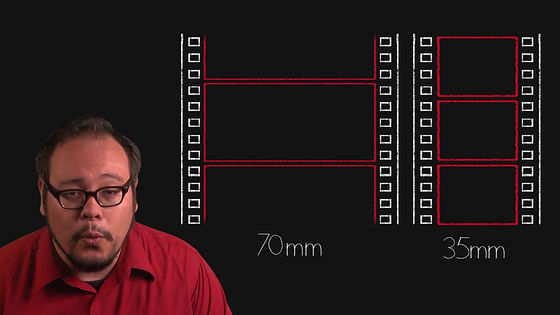
The film ``Ben Hur,'' famous for its chariot race scene, was filmed using the MGM 65 standard and an ultra-wide screen with an aspect ratio of 2.76 .
The MGM 65 would eventually evolve into Panavision's Super Panavision 70 .

It has a similar standard to MGM 65, but it uses a regular spherical lens instead of an anamorphic lens, and has an aspect ratio of 2.20 . His most famous work is ``Lawrence of Arabia,'' for which cinematographer Freddie Young won the Academy Award for Best Cinematography in 1962.
However, the drawback of 70mm film was its high price. On the other hand, advances in chemical processing for 35mm film have solved the problem of film grain, resulting in image quality comparable to that of 70mm film. It wasn't until the introduction of IMAX in the 1970s that 70mm film gained attention.
◆Then where does '16:9' come from?
Up to this point, `` 1.33 '' ( 4:3 ) from the silent film era, `` 1.37 '' from the Academy Ratio, `` 2.59 '' from Cinerama, ``2.35'' from Cinescope, ` `1.85 '' from VistaVision, and `` 1.85 '' from Todd AO. 2.20 '' and MGM 65's `` 2.76 '', the history of aspect ratios has been made with such things as ``2.20'' and MGM 65's ``2.76'', but I noticed that the current mainstream 16:9 , that is, `` 1.77 '' does not appear here. . Where did the 16:9 size come from?
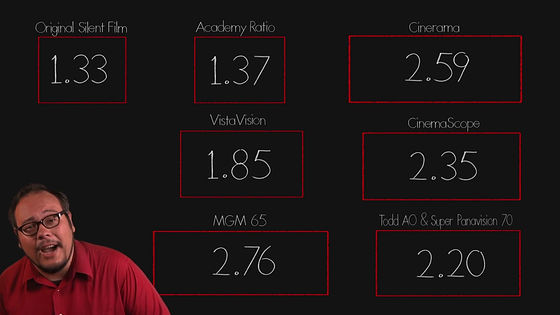
The answer lies in the history of television, the younger brother of movies. When the HDTV standard (high-definition television standard) was being planned in the late 1980s, SMPTE (Society of Motion Picture and Television Engineers) engineer Kearns H. Powers proposed the ``16: It had an aspect ratio of 9.
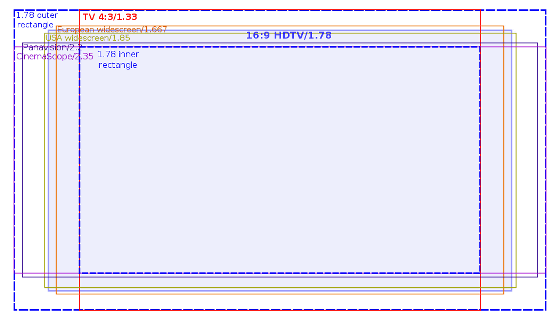
Geometrically speaking, 16:9 size falls between the two extremes of aspect ratio: 4:3 and 2.35. Therefore, if you correctly convert the original video of either aspect ratio to the 16:9 format, the area of the video will be relatively the same even though there will be some 'blank' at the top and bottom of the video. That means it's possible.

Based on this background, the aspect ratio ``16:9'' was born, and it is now widely used as the default for all kinds of widescreens, from DVDs to ultra-high definition 4K. It's really interesting that people who thought that ``16:9'' was created by squaring the numbers ``4:3'' were wrong, and that it was actually a product of compromise. This case can be said to be a good example of how industry specifications are sometimes created through such circumstances.
Related Posts:

